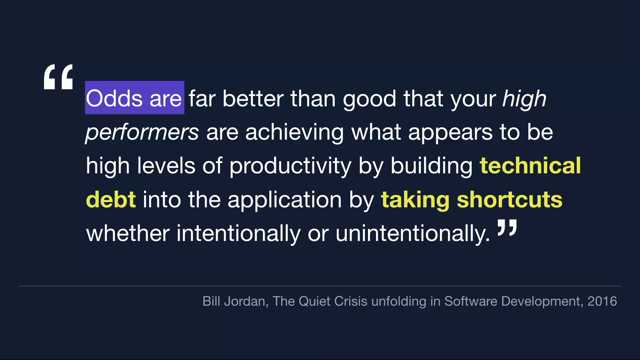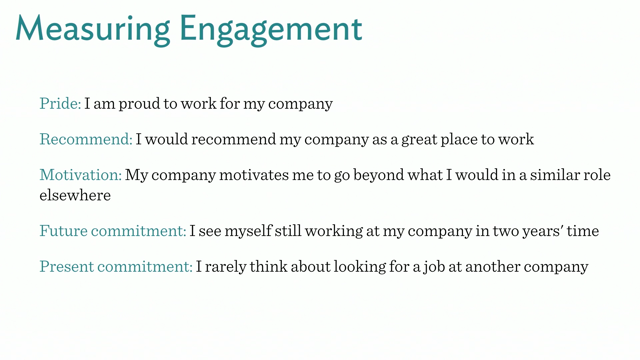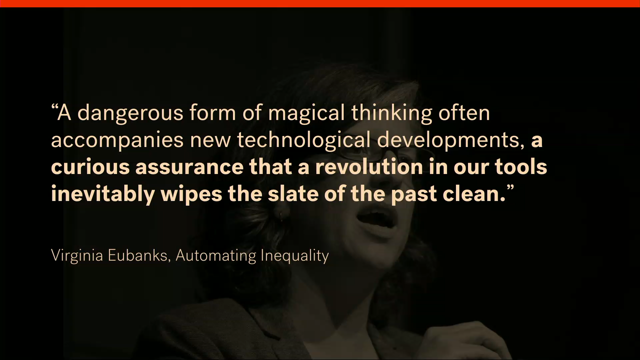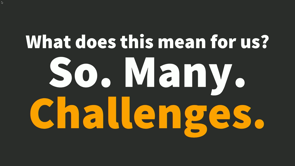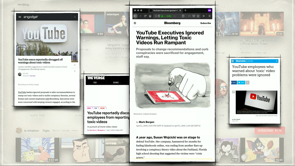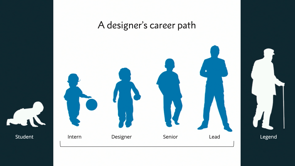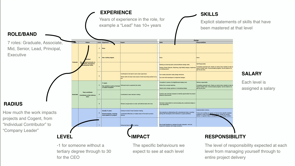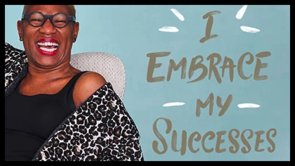
(upbeat electronic music) (applause) - Morning everyone.
Introverts and extroverts.
I'd like to start off this talk with a poll so, by a show of hands, if you feel like you're an introvert most of the time, can you please raise your hands? That's more of you than I thought it would be. (audience laughs) And if you feel like you are an extrovert most of the time can you please raise your hands? Okay.
Now if you feel like you're not quite an introvert, you're not quite an extrovert, you're somewhere in between can you please raise your hands? Wow.
So by my estimation that would say 30-40% introverts, 10-20% extroverts and the rest being ambiverts.
Thanks for that.
So my name is Tim Yeo and this talk is called Design Leadership for Introverts and for the last 40 years, I've been an introvert.
And this is what introversion feels like for me. Small talk is really hard for me.
(audience laughs) I had to learn how to make conversation about the weather, asking people how they are, what their plans are for the weekend.
In the past when people asked me how I was I actually told them, and then I realised I was probably oversharing. (audience laughs) If there's a meetup and nobody else I know is going, I might choose not to go, rather than make small talk all evening with a room full of strangers.
Because for me, too much social interaction is exhausting.
Even if the social interactions are ones that I like, like with friends and family.
At a conference like this one, sometimes I just need to step away and have some quiet time to recharge, like the octopus climbing into the shell.
Now, a few myths about introversion that I like to disspell.
Firstly, introversion is not about being shy. Being shy is a fear of social judgement , even an extrovert can be shy.
Rather, introversion and extroversion is how we respond to stimulation, where stimulation can be social interactions, it can be noisy environments or working in an open-plan office for example.
So for an introvert to operate at their best, they require an environment that has less stimulation, and for an extrovert to operate at their best they require environments with more stimulation.
The goal here, really, is to find a zone of stimulation, that sweet spot, that allows us to operate in a high-performing way. Where you feel most alive, most switched on, most capable.
Or to use a more concrete example, if an extrovert and introvert were faced with the prospect of a Saturday night home alone, an extrovert might be de-energized and an introvert might be energised.
Next, introversion and extroversion, it's not an absolute.
How an introvert and extrovert behaves depends on contexts, environment and the people that are around you at the time. No one is truly an introvert or an extrovert all of the time.
In reality, our level of introversion and extroversion exists on a scale.
It's just who we are and how we behave most of the time.
There's also a third category called ambiverts, who are somewhere in the middle and they're equally comfortable being both an introvert and an extrovert, they just have to choose.
Now, in 2012, Susan Cain gave a TED talk called the power of introverts, and her talk really resonated with me.
If you haven't seen it, I hope that you will. She said that, when she was growing up, she felt that her quiet, introverted way was wrong. Just imagine that for a second, growing up thinking that the way that you are is wrong.
People were telling her that she should be more outgoing, that she should be more like them rather than they more like her.
She also said that we live in a world where the extrovert ideal is desired.
And as a design leader, this certainly feels true for me, because when people paint a picture of what they expect a leader to be, it often looks something like this: A leader commands the centre of attention.
A leader is outgoing, is talkative, is dominant. A leader is able to deliver charismatic speeches, rallying large audiences at the drop of a hat. A leader is the ultimate salesman, people are hanging onto their every word and waiting for the next one with bated breath. A leader is, in essence, an extrovert.
I look at this and I think, "Wow, that's so not me." I'm not saying this is a bad way to lead, I'm just saying it's not the only way to lead, and certainly not all the time.
Which then begs the question, if we can accept that the world is the way that it is, a world that desires extroverts, how can we as introverted design leaders operate successfully within it? If you're an introvert and you're in an IC or individual contributor role, you can probably get away with indulging your introverted ways, focus on pushing pixels.
But in leadership, especially people leadership, your pixels are now people, and you can't push people the same way that you push pixels.
So, how can an introverted design leader succeed? Now, the answer to that question is not be more extroverted, that would be super lame.
(Tim and audience laugh) Because you'll be forcing yourself to be somebody that you're not.
I tried that, it doesn't work, it always felt unnatural.
Instead the techniques that I'll be sharing with you today are ways of operating that allowed me to remain my true authentic self and still operate effectively as a design leader. Or in other words, how can we use our introverted ways, not as a flaw, not as if there's something wrong with us, but using our introverted ways as a superpower. Now in sharing these techniques I'll be sharing them around four areas or activities where I believe we do most of our leading.
They are meetings, team selection, social media and then lastly, networking.
Let's start with everyone's favourite activity, meetings.
Everybody loves meetings, right? Broadly, a meeting could be a one-on-one, it could have two, three, four, five people in it, even a workshop is a type of meeting.
By far, my favourite type of meeting has to be a one-on-one.
As an introvert, you only have to focus on one person, no group of people competing for attention. It's really a conversation between two people, one person speaks, one person listens, at least most of the time.
But more importantly, it's away from the public eye. People are more open to being wrong when nobody else is looking.
They're also more open to tell you what they really think, when nobody else is listening. If you have an alternate view, people are more willing to listen and consider it. In my opinion, 50-60% of your meetings should be one-on-ones.
Also, when it comes to one-on-ones, context changes behaviour.
If you have a difficult subject to discuss with another person, for example when you fundamentally disagree on a topic, or if you have personal problems at home, changing where you have your meeting can change the person's behaviour and the outcome of the meeting.
You don't have to be stuck in the meeting room to have a meeting.
You can take a walk, you can sit on the sofa for a change, you can have a meeting over lunch or coffee. It's an opportunity for you to engage on a personal level, away from the prying eyes of others and away from business and behaviours as usual. Changing where you have your one-on-ones can change behaviours and outcomes.
If you're going to a meeting and you have something to say but you're concerned you may not have the chance to say it, put yourself on the agenda.
It can be your agenda, it can be someone else's agenda, it doesn't really matter.
Just put yourself on the agenda.
That way, your turn will come as the meeting proceeds. Also, tell others beforehand to pull you in. You might notice in meetings, some people are better at hogging the microphone than others, and they somehow naturally hold people's attention.
This comes very naturally to them, but it may not come as naturally to you.
In contexts like these, tell these individuals to pull you in.
It might sound something like this, let's say the guy's name is Joe.
Say, "Hey Joe, look, sometimes in meetings, "I may appear quieter than usual, "I may have a look on my face like I wanna say something "but I'm not saying it.
"If you ever see me like that, "don't be afraid to say, Tim, what do you think? "I'm not afraid of being put on the spot, "if I have something to say, I'll say it, "if I don't, we can move on.
"It's just that sometimes, "I don't find it as easy getting attention of others, "or I might be lost in my thoughts "when I should be reacting and responding.
"If you can pull me in, that would be great." If you are in a workshop, be the moderator. Facilitation is a superpower because, as a moderator, you get to control time, agenda, the flow of conversation.
You have direct influence on the outcome of the session. In order to facilitate well you have to listen more than you speak, you have to read the body language of participants in the room, you have to observe the energy in the room, you have to direct the conversation towards others rather than yourself, and you get to pull other introverts in, and you have the power to pause people who hog the microphone for too long.
If you look at all the items that I have highlighted here, these are all strengths that introverts have. They come naturally to introverts as well.
So in workshops, be the moderator.
Now, last point on meetings, how introverted design leaders can influence high-stakes meetings.
So, a high stakes meeting is one where an ultimate decision has to be made, it's a go or no go decision, it usually involves a lot of people.
Your boss is there, your boss' boss is there too. There's a lot riding on the outcome of this one meeting, and it usually involves people with strong opinions and loud voices.
So, as an introverted design leader, what do you do? I've been to a few of these high stakes meetings and I think there's a secret to them.
And the secret is this: People who attend these meetings have most likely already made up their minds before the meeting itself.
So as an introverted design leader, the technique here is to influence the outcome before the meeting, not during.
Let's think about the audience here for a second. High stakes meetings usually involve senior executives. And senior executives usually have more experience. Senior executives also tend to have more things to focus on and less time to make decisions. Also the reality is that very few single decisions would truly break a company.
It's usually a series of poor decisions that would break a company.
Therefore, senior executives would lean onto their prior experience in order to help them make decisions quickly.
Once these decisions are solidified in their minds, in my experience, it's very hard to change them. That's because revisiting these decisions takes even more of their time and energy.
Rather than changing their minds, sometimes some executives would only look for evidence that would prove that their decision was right, or even worse, sometimes they would only look for evidence that would prove that another person's decision was wrong.
It takes a very enlightened leader to change your minds when presenting new information that suggests their decision was wrong.
So what do you do? You can have one-on-ones hours, days, weeks, or even months before the meeting.
How far in advance depends on how high the stakes are. The goal here is to influence the thinking of senior executives before they make up their minds. You get to explain your position, your rationale, all the pre-work and research that lead to your conclusion.
You can also ask what they think, and if it's a one-on-one, people are more open to being wrong, or not to have all the information.
A monologue then turns into a conversation, and a conversation is more likely to arrive at an aligned conclusion.
Think of it like trying to steer a container ship. Now, I did not know this beforehand but, a container ship takes twenty minutes to come to a full stop.
Twenty full minutes.
So if you want to change the course of a container ship, you have to start steering early, like, really early.
Switching gears, team selection.
People that you choose to be on your team.
I like to focus on hiring and choosing managers. When it comes to hiring, rather than hiring people who are like me, I always try and hire for our team's weaknesses. What I mean is, aside from skill, competency or diversity, I wanna hire a person who is good and strong at something that the team still lacks or is bad at.
So that collectively, we as a team are strong, because as individuals we are each strong at what others are weak at.
And as an introverted design leader, you're going to need some team members who are social butterflies.
Work, after all, is a team sport, with teammates in product and engineering and operations, finance, et cetera.
Having social butterflies on your team will help you build bridges, connections, and relationships across teams, across a company and across our industry.
And these connections will help extend the circles of influence and impact that we designers have on the work that we do.
It does not mean that every team member has to be an extrovert or social butterfly who thrives on social interaction. It also doesn't absolve you, the design leader, from the need to socialise and build relationships. But it certainly would not hurt if this trait came very naturally to a few members on your team.
People that you can lean on when you have maxed out on social interactions.
When your team is at that scale when you need to hire managers, choosing an introverted or extroverted manager is something that we should consider.
In 2011, Wharton's professor Adam Grant and his co-authors published a paper titled: Reversing the extroverted leadership advantage. They wanted to answer this question: Do teams always operate more effectively under extroverted leadership? Their research concluded the following; if your team is made up of proactive members, an introverted leader can get better results. If your team is made up of passive members, an extroverted leader can get better results. And the reason this study concluded is this. Proactive team members tend to bring constructive ideas on how to improve things, how to make things better.
Extroverted leaders tend to be assertive, dominant and have clear lines of authority and direction. So when you pair an extroverted leader with a proactive team, extroverted leaders can feel threatened, as if their top-down vision and authority is being questioned.
They may be less receptive to proactive ideas and maybe cause proactive team members to become less proactive.
On the other hand, introverted leaders tend to be more receptive to bottom-up constructive ideas, more willing to listen if a better idea emerges.
This may lead proactive team members to become more proactive.
So when choosing a manager, consider the members that make up a team, and whether an introverted or extroverted leader would help you get the best results from your people.
And now we turn our attention to social media. In my opinion, social media is a gift from the introvert gods.
Before, in order to be heard, public speaking is one of the best ways for us to broadcast our thoughts and views. But introverts don't respond as well to public speaking as extroverts do.
With social media, all of a sudden, we introverts have the same if not further reach than extroverts do, across continents, across time-zones, all on our own terms from behind the safety of a screen.
I suppose the turning point for me came when I realised that, as far as social media is concerned, it's not just about having something special or unique to say that's never been said before. It's about participating in the global conversation that pushes our craft and our own learning forward. Let me explain what that means.
If you wanted to argue with Jared Spool about why everyone is not a designer, just tweet him.
If you wanted Crystal Higgins' advice on your hair and body journey, just tweet her.
And if you wanted to speak to Andy Budd about the state of design in the US and London, just slack him.
All of a sudden, all of the people that you respect and read about are right there at your fingertips.
It doesn't matter that you have not met these people before.
We are all connected by our sense of community and our care for our craft.
We can skip the small talk, which is great, and start as if we are all friends in the middle of a conversation.
If you're an introvert like me, a handful of deep, meaningful conversations means so much more than plenty of shallow, forgettable ones.
Also, if these conversations happen in public channels, these conversations then represent your view of the world for others to see.
It represents your thought leadership.
You are what you write, share and tweet.
Your conversations on social media represent who you are.
What you say and how you say it become your personal brand.
Sometimes, some conversations are just better to have in private.
You might need advice on a delicate work situation with your boss, you might be looking for a new job but wanna keep it on the quiet.
You might have a difficult team member that you're struggling to manage.
Now these are not conversations you want to have on public social media.
To this end I can think of two slack groups that were created by design leaders, for design leaders.
Now, both groups are curated, invite-only, bound by codes of conduct, and only open to leaders who work in design around the world.
These slack groups provide a safe haven for design leaders to have open, honest conversations, knowing that the people listening are their peers and equals.
If you are not yet part of these groups I really encourage you to join.
And now we arrive at every introvert's favourite activity, networking.
(audience laughs) Oh how much do we introverts love networking. Networking is one of those activities that somehow uniquely combines all of the things that we introverts do not enjoy.
And it mostly happens like this: You arrive to a room full of strangers, you grab a slice of pizza and a drink, and you stand awkwardly on the side, quietly scanning the room, (audience laughs) trying to make contact with people, there's a group over there that's deep in conversation, you don't quite see a way in, you see individuals just like you, scattered around the perimeter, but you dread making smalltalk again.
So you just stand there with your pizza and a drink in hand.
To the introverts in the room, does any of this sound familiar? (audience laughs and some respond "yes") Now clearly, networking does not come naturally to me. But I recognised that it's important for me, as a leader, to extend my network.
Because the way that I framed it in my mind is, the goal of networking here is resourcefulness. It is to grow the pool of people that I know, who I can help and who can help me.
It's something I need to do to become a better leader, so how do I do it? Here's a few techniques.
Do your prework about attendees you'd like to meet. Some events like meetups and conferences will have a list of attendees.
Scan through a list, pick out people you think are interesting, stalk them online and reach out to them on Twitter or LinkedIn.
You could say, "Hey, you're attending that event too? "I would love to catch up." That way, when you do meet in person at the event, it feels less awkward.
Because you're no longer strangers, you've already introduced yourselves online. Another technique is to change your frame, and this one is a bit of a Jedi mind trick. What if, when you're networking, you pretend it's user research.
Regardless if you're an introvert or extrovert, most of us, we've met a customer or done some for a one-on-one with a person using our product.
By changing your frame and pretending it's user research, a room full of strangers suddenly turns into a room full of opportunities to learn about people.
Who are they? What do they do? Why are they here? What's their situation? What do they want to get out of this event? Maybe I can help them, maybe they can help me. Through this lens, smalltalk questions come quite naturally to us.
Just remember not to ask questions all the time, because that would feel like an interrogation by the end of the conversation.
When networking, have some measurable output for your networking activity.
It might be exchanging business cards, adding a personal LinkedIn, or exchanging contact details.
Remember, the goal of networking is to become more resourceful by growing the pool of people that you know.
You can't do that if you don't know how to reach that person again when you need them. Next, have an exit script.
Sometimes conversations come to a natural end. We run out of things to talk about and that's totally okay.
Rather than awkward silences, have an exit script so they can leave and start up another conversation with somebody else.
Practise, practise, practise your exit script. Repeat it until it comes naturally.
It could sound something like this: "Hey John, it's been really good chatting with you, "I'm gonna circulate and meet a few other people "if that's okay.
"Do you have a card or can I add you on LinkedIn? "I'll make sure to send you that article "we spoke about." Something like that.
And who says networking has to be a group activity? Reach out to people that you'd like to meet, arrange for a catch up over coffee or lunch, to talk shop.
One-on-ones are great for getting to know someone better.
In closing, I'd like to bring our attention back to Susan Cain's talk, and the extrovert ideal. The world may continue to favour extroverts as leaders, but I hope I convinced you that we introverts have our place as effective leaders as well. This talk was never intended to be introverts versus extroverts.
I think we all have a role to play.
And I hope that the techniques I've shared can be put to good use by introverts and extroverts alike.
Introversion is not a flaw, introversion is not a disability.
It's a superpower, and I hope you let your superpower shine.
Thank you.
(applause) (upbeat electronic music)
